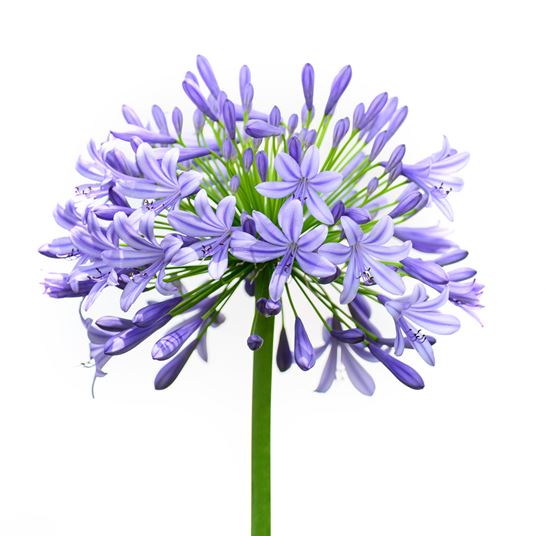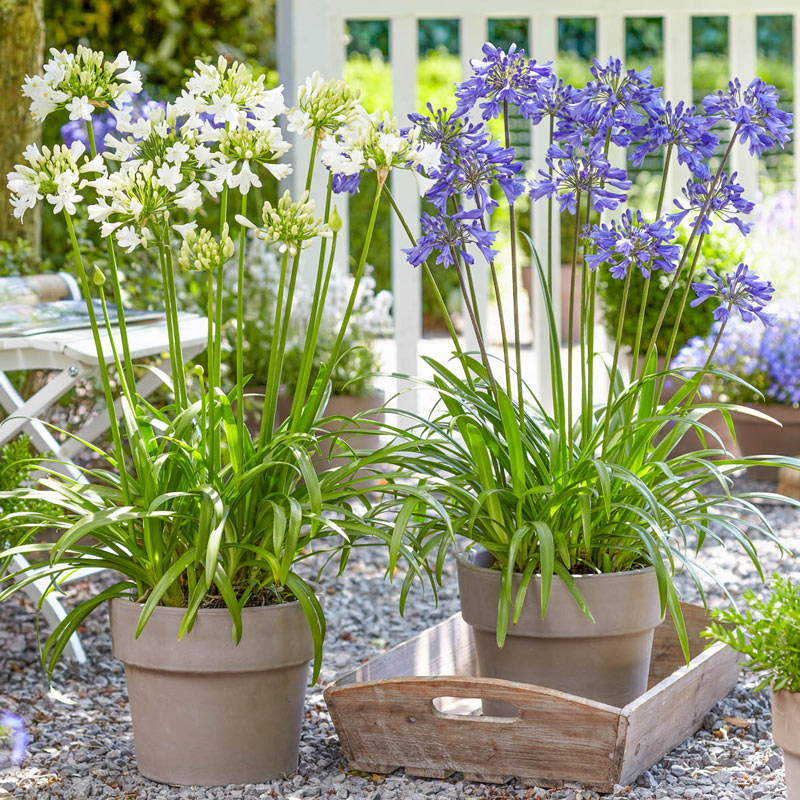How to Plant and Maintain Agapanthus in Your Yard
How to Plant and Maintain Agapanthus in Your Yard
Blog Article
Mastering the Art of Agapanthus Care: Vital Actions for Healthy And Balanced Growth and Dynamic Blooms
In the realm of gardening, the growing of agapanthus stands as a rewarding endeavor for those who look for to support these stylish blooming plants. With their striking flowers and graceful vegetation, agapanthus has recorded the interest of garden enthusiasts worldwide. Nonetheless, accomplishing optimal development and dynamic blooms needs a nuanced method that encompasses numerous important steps. From picking the ideal variety to mastering trimming methods, the journey towards cultivating growing agapanthus plants is complex and holds the crucial to unlocking the full potential of these botanical gems.

Picking the Right Agapanthus Variety

When choosing the ideal Agapanthus range for your yard, consider elements such as climate viability, blossom shade, and growth practice. Additionally, think about the climate in your region to make sure the Agapanthus range you select can prosper in your details problems. Recognizing the growth routine of various Agapanthus selections is critical for appropriate placement within your yard.
Perfect Planting Problems
Thinking about the optimum ecological demands is essential for effective Agapanthus cultivation. Agapanthus plants are sensitive to cold temperature levels and need to be safeguarded from frost throughout wintertime months.
To make sure healthy and balanced development and dynamic blooms, plant Agapanthus bulbs at a depth of regarding 2-4 inches and space them 8-12 inches apart. Mulching around the base of the plants helps retain dampness and reduces weed development.
Watering and Feeding Tips
Keeping correct dampness degrees and offering crucial nutrients are crucial elements in the care program for Agapanthus plants. It is vital to strike a balance when it comes to sprinkling Agapanthus. These plants favor consistently damp dirt however are susceptible to root rot if overwatered. Throughout the expanding season, water deeply once a week, ensuring the soil is well-draining to protect against waterlogging. In hotter environments or throughout durations of drought, more constant watering may be necessary to keep the soil equally wet. However, lower watering in the wintertime to avoid water logged conditions.
Fertilizing Agapanthus is necessary for advertising healthy and balanced development and respected flowers. Apply a balanced plant food, such as a 10-10-10 formula, in the very early spring as brand-new growth arises. Repeat this application every 6-8 weeks throughout the expanding season. Avoid excessive fertilizing, as it can lead to rich foliage at the expense of flowers. Always comply with the manufacturer's directions for correct dilution and application methods. By complying with these watering and feeding ideas, you can ensure your Agapanthus plants grow and generate vivid, resilient blooms.
Pruning Strategies for Agapanthus
Pruning Agapanthus plants at the suitable times and with correct techniques is critical for maintaining their health and wellness and promoting optimum growth and flowering. The perfect time to prune Agapanthus remains in late winter months or early spring prior to new development emerges. Start by getting rid of any type of yellowing or dead fallen leaves near the base of the plant. Cut them as short as feasible without harming the emerging shoots.
Deadheading invested blossoms can also redirect the plant's energy wikipedia reference right into producing more flowers rather than establishing seeds. If you want to gather seeds for proliferation, leave some flowers to completely dry and mature on the plant.
Bear in mind to utilize clean, sharp devices to make precise cuts and minimize the risk of introducing illness. Agapanthus. Normal trimming will help maintain your Agapanthus looking healthy and cool while ensuring a bountiful display screen of lovely blooms
Taking Care Of Typical Insects and Diseases
After guaranteeing proper pruning techniques for Agapanthus, it is necessary to resolve typical pests and diseases that can affect the health and vitality of these plants. Agapanthus plants are usually durable but can still drop target to certain issues. One usual bug that influences Agapanthus is the Agapanthus gall midge. This tiny, orange fly lays its eggs in the foliage, resulting in distorted development and flower buds that stop working to open. To battle this bug, prune and destroy any type of damaged plant parts and think about using insecticidal soap.
One more typical issue is fungal fallen leave area, which offers as dark sores on the fallen leaves. To stop fungal diseases, make certain great air flow around the plants, prevent above watering, and remove any type of infected leaves quickly. In addition, Agapanthus plants can struggle with origin rot if they are grown in improperly draining pipes dirt. To stop this, plant Agapanthus in well-draining dirt and prevent overwatering. By being watchful and taking punctual activity versus bugs and conditions, you can aid your Agapanthus plants grow and create lively blossoms.

Final Thought
Finally, mastering the art of agapanthus treatment includes selecting the appropriate variety, giving suitable growing problems, correct watering and fertilizing, ideal pruning techniques, and addressing common insects and conditions. By complying with these More Info necessary steps, you can guarantee healthy development and vibrant blossoms for your agapanthus plants. Remember to routinely check and maintain your plants to promote their total health and durability.
To ensure healthy and balanced growth and vivid blooms, plant Agapanthus light bulbs at a depth of regarding 2-4 inches and space them 8-12 inches apart. By following these watering and feeding tips, you can ensure your Agapanthus plants thrive and create vibrant, long-lasting flowers.
One common parasite that impacts Agapanthus is the Agapanthus gall midget. Additionally, Agapanthus plants can suffer from root rot if they are planted in badly draining dirt. navigate to this site By adhering to these necessary actions, you can make certain healthy growth and dynamic flowers for your agapanthus plants.
Report this page